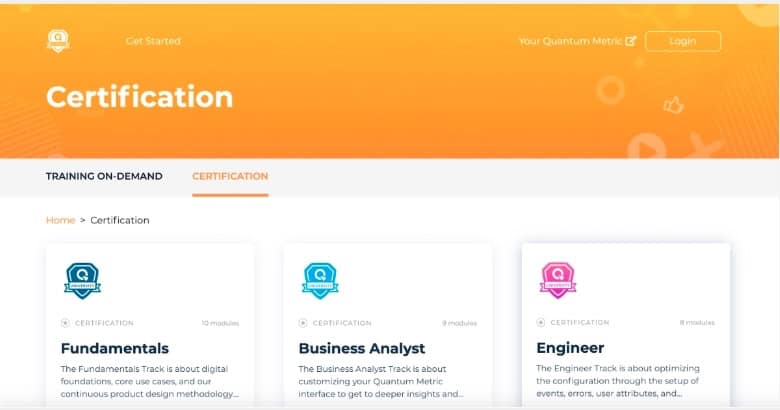Forget the Old Way: Revolutionize Customer Success with Generative AI
Elise Dopson | WorkRamp Contributor
View bioLearning Tips Straight to Your Inbox
Organizations are tasked with the impossible: finding ways to drive results and improve efficiency with limited resources. Headcounts have been reduced; budgets are lower than ever. However, most organizations still want to deliver excellent customer experiences that drive long-term revenue.
Luckily, there’s a solution to help teams automate manual tasks.
Artificial intelligence (AI) uses computer simulations to replicate human activity. It’s a booming industry. Studies predict the AI market will be worth $266.92 billion by 2027.
Whether you’re unsure where to begin or looking for new ways to leverage technology, discover how your organization can use AI to transform customer success.
In this post:
The advantages of using generative AI for customer success
AI is a valuable tool for modern teams, including those operating in customer support or experience.
Nebojsa Savicic, Co-founder of Plainly, says: “I believe AI will become more sophisticated in mimicking real human interaction and therefore help us eliminate repetitive tasks for the team. This will allow for more time spent on strategizing on how to make the customer experience better.
“It will also positively impact retention rates because the customer support teams will have more bandwidth to educate users about how they can get the most out of the software.”
Statistics prove it:
- Two-thirds of millennials expect real-time customer service—something chatbots can deliver, but humans can’t (unless you power an expensive 24/7 human team)
- Sales teams that use AI can increase leads and appointments by more than 50% and reduce costs by up to 60%
- Almost 60% of customer service professionals said AI has helped save them time or work faster, and nearly half say it’s made their job easier.
Read more: 6 Ways to Reduce Customer Churn
How to use generative AI to enhance the customer experience
Now we know the advantages of using AI in your customer success team, let’s explore eight practical use cases for AI.
- Provide tailored learning experiences
- Translate learning content into multiple languages
- Answer basic queries with an AI chatbot
- Pre-qualify customers who need human help
- Automatically route support tickets to the most appropriate agent
- Analyze learner feedback
- Identify at-risk customers
- Use AI-assisted coaching tools
1. Provide tailored learning experiences
While you have buyer personas that detail your target audience’s pain points, there are likely several reasons someone starts using your product.
Educate prospects based on their goals by pulling resources from your customer learning management system (LMS) or online academy for support.
The Learning Cloud from WorkRamp enables organizations to create their own online learning academies. Quantum Metric, for example, created its customer education program where new customers are automatically enrolled in the academy. Each person can get certified in specific courses—a technique designed to drive product adoption and encourage “stickiness.”
Chauncy Cay Ford, Quantum Metric’s Director of Enablement, says: “It just goes to show you that real stories, real narratives, make a difference. It’s not just your average ‘click here, click there’ training; with QMU we’ve created a narrative that makes people excited about using our product.”

Plus, thanks to WorkRamp’s integration with Zendesk’s customer support platform, agents can use Zendesk’s AI functionality to provide tailored learning experiences for customers.
If you’re discussing a specific use case for a product, for example, Zendesk can pull related learning content from WorkRamp’s customer LMS mid-conversation—without having your agent manually search for it.
2. Translate learning content into multiple languages
The beauty of e-commerce is that customers can buy your products and services from anywhere in the world. But only providing learning content in your language can alienate international customers—especially the 68 percent of people who prefer to engage with brands in their native language.
Use AI tools like Quillbot to translate your learning content and make learning more accessible. This includes text-based learning content such as:
- Video transcriptions
- Whitepapers and eBooks
- Support guides
Survey your existing customers and ask which languages they’d prefer to learn in. Prioritize those languages and translate existing learning materials to serve customers who prefer to learn in their native language.
3. Answer basic queries with an AI chatbot
Chatbots aren’t a new concept in the customer service space. Recently, AI chatbots with new features have emerged to improve the customer experience—like chatbots that use machine learning to predict what a customer would help and provide proactive support.
“Using an AI chatbot on your website is one of the easiest ways to improve customer experience using AI,” says Jenna Nye, CEO of On The Strip. “A chatbot helps customers find the information they need without spending time searching or waiting to talk to a customer service agent.”
Jenna adds: “It’s interactive so it fulfills that hands-on touch customers expect, while also being fast and efficient and available on demand.
“The chatbot will be able to direct the customer to where they can find the answer to their questions, and in the case that it can’t provide them with the information they need, it can connect them with a service rep.”
4. Pre-qualify customers who need human help
Chatbots don’t always satisfy customers with complex queries. How do you find the middle ground between using AI to answer transactional queries and providing human support for those who need it—without frustrating them with a long route to human contact?
In OpenStore’s case, an AI-powered chatbot can accurately predict whether customers will be satisfied with a chatbot or human support agent.
Its Head of Business Operations, Lukas Judodihardjo, says: “Given our scale at OpenStore operating 40+ e-commerce stores, it’d be remiss not to experiment with AI to drive efficiencies and offer customers a faster resolution to their inquiries.
“Our AI systems, powered by GPT-4, allow us to first detect whether the customer needs a human response, and through this, we can close 35 percent of tickets across all channels with incredible accuracy before they get to an agent.”
5. Automatically route support tickets to the most appropriate agent
You likely have customer support agents who specialize in particular problems. Whether it’s an agent that helps onboard new customers or a support rep with excellent product knowledge, use this to your advantage with AI.
Artificial intelligence tools can automatically route incoming support requests to the agent best equipped to resolve the issue. If someone is calling because of a delivery problem, for example, an AI-enabled customer support software could automatically divert the call to the agent that specializes in logistics.
Nicky Walker, Director at Connect Communications Services, explains: “Rather than possibly going to the wrong handler, AI can determine which team or account manager would be best placed to handle the inquiry efficiently on the first contact with an individual. This saves time and delivers a better customer experience.”
6. Analyze learner feedback
Learner feedback is crucial to developing an online academy that customers engage with. Instead of having your customer success team manually reach out to gather feedback, use AI features like:
- End-of-module quizzes that analyze how much information learners retained
- Chatbot-style notifications that ask customers to give feedback once they complete a module
Combine this with quantitative data inside WorkRamp’s customer LMS. What percentage of customers completed your training program? How has your Net Promoter Score (NPS) changed over time? Answers can prove your program’s ROI while identifying opportunities for improvement.
Similarly, analyze how many people who completed the course went on to submit a support ticket. This can help expand your chatbot capabilities and existing learning materials, which use AI to alleviate pressure on your team. 
7. Identify at-risk customers
Churn is a big problem for customer success teams. The more people cancel their subscriptions or change their purchasing habits, the harder you’ll have to work to acquire new customers. (It’s much easier—and cost-efficient—to monetize an existing customer over a new one.)
According to James Wilkinson, CEO of Balance One Supplements, “AI-driven customer success tools can accurately and extensively map individual customer journeys and create targeted, highly personalized messaging for each customer at their respective stages.
“These tools can also predict which leads are likely to drop off during the buyer journey, giving businesses ample time to intervene and implement corrective measures that persuade the lead to stay on and convert. They create a holistic picture of each customer’s needs, giving the company insight into their expectations of every interaction.”
James adds: “This level of detailed insight makes it easier for the company to allocate the necessary resources and expertise to predict and fulfill these expectations at scale.”
8. Use AI-assisted coaching tools
Customers are happy when they get excellent service. That’s only possible if your customer success team is at the top of their game.
Learning and development is a crucial part of any organization. Not only does it ensure your team is providing excellent support to customers, but it also helps with the business’s longevity. Some 94 percent of workers would stay at a company longer if their employers invested in their careers.
Read more: 9 Customer Service Training Ideas to Improve Customer Experience
Niyanta Khatri, Enterprise Sales and Partnership Development Lead at Logitech, says: “AI-assisted sales cadence and call coaching are tools for businesses selling to enterprise customers.”
“This eliminates wasted sales time and improves the nurturing process needed for customer success, and increases the share of wallet as you empower your reps without adding a new process to their routine.”
The Learning Cloud’s AI Assist features can help you create sales and customer success training content from scratch–or make helpful suggestions to simplify the process. Plus, since the Learning Cloud is an All-in-One LMS, you can create and manage learning content for employees and customers in one centralized platform.
Artificial intelligence is a powerful tool with the potential to transform customer success.
Use the techniques we’ve shared here to replace repetitive tasks and allow your team more time to do what they do best. From tailored learning experiences to automatically routing incoming requests, AI could be the software you need to help your team perform their best and create delightful customer experiences.
The Learning Cloud helps customer success teams work more effectively and provide better service. Contact us today to schedule a free, personalized demo.
Complete the form for a custom demo.
Recent Posts
- Top LMS Integrations That Power Smarter, Faster Learning July 2, 2025
- Introducing WorkRamp Analytics Studio: Unlocking Your Data Insights with AI June 30, 2025
- 11 AI LMS for AI-Powered Learning June 27, 2025
- The Best LMS Platforms for Customer Retention (2025 Guide) June 27, 2025
- 11 Best AI Learning Platforms June 16, 2025
Elise Dopson
WorkRamp ContributorElise Dopson is a freelance writer for B2B SaaS companies. She’s also the co-founder of Peak Freelance and mom to an adorable Spaniel pup.
Ready to Get Started?
Get in touch to learn how WorkRamp can help you achieve your training goals.
Request a Demo




